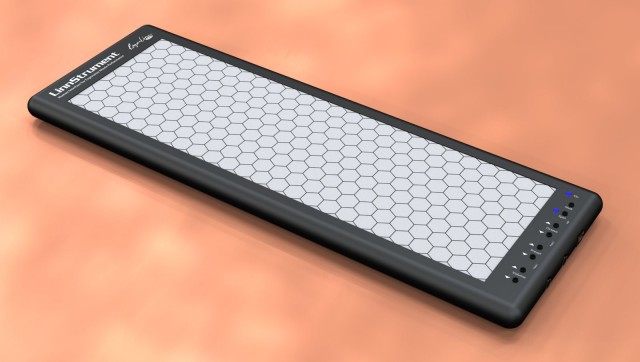
Moving beyond touching a screen as two-dimensional plane, Roger Linn’s concept music controller, the Linnstrument, adds tactile response and expression. Roger calls it “3D Note Expression,” but in lay terms, it means pushing harder on the controller makes it respond differently, as you’d expect from a physical instrument.
Roger this week posts an update on how his development is going and what he imagines – good timing, as this week we also saw another design on the same lines, the Soundplane. The sensing methods are different, enough so that I can easily see room for both, but the upshot is the same. Randy Jones in that story also reflects that, once these things are invented, what will really be essential is musicians to play the things and develop lots of interesting software that can use the controllers. See, previously:
A Glimpse of the Soundplane Controller, Innovative Tactile Multi-Touch, in the Lab; Call to Action
The major change in Roger’s latest update, apart from adjusting the form factor to something longer and more spacious, is the addition of different overlays, including traditional keyboard “manuals,” fret-style grids, and honeycomb-patterns hexagonal grids like the one at top.
It isn’t just a blank slate any more – certainly not in Roger’s mind, at least. Linn, a guitarist by training, has an extensive schema worked out for a grid that would function like the frets on a guitar neck. Movements in any direction can make an adjustment, impacting timbre (perpendicular to the front edge), pitch bends (parallel to that edge), and loudness (pressure).
It’s still all concept, with one working prototype; Roger’s professed style is to work in big-picture concepts. But I’d love to see some of these ideas reach fruition.
I’m still hopeful that a simple, inexpensive, open source option could evolve from this landscape. I hope for that not necessarily even because of a philosophical belief in open source so much as the sense that such an open field could lend itself to experimentation by, say, the people who read this site, not only in creating software but building the instruments. In the case of Roger’s design, unlike the more novel approach used by Randy, patent questions are less of an issue. And a community of people experimenting in such a way could simultaneously yield software that could be compatible with the proprietary and commercial projects.
Lots more ideas and reflections – including detailed notions of how you’d play this thing – on Roger’s site:
Preview: LinnStrument – A New Musical Instrument with 3D Note Expression
And here’s a new video, entitled, cheerily, “Gloomy Sunday” (the music of Rezső Seress):
For review, Roger’s original demo video: